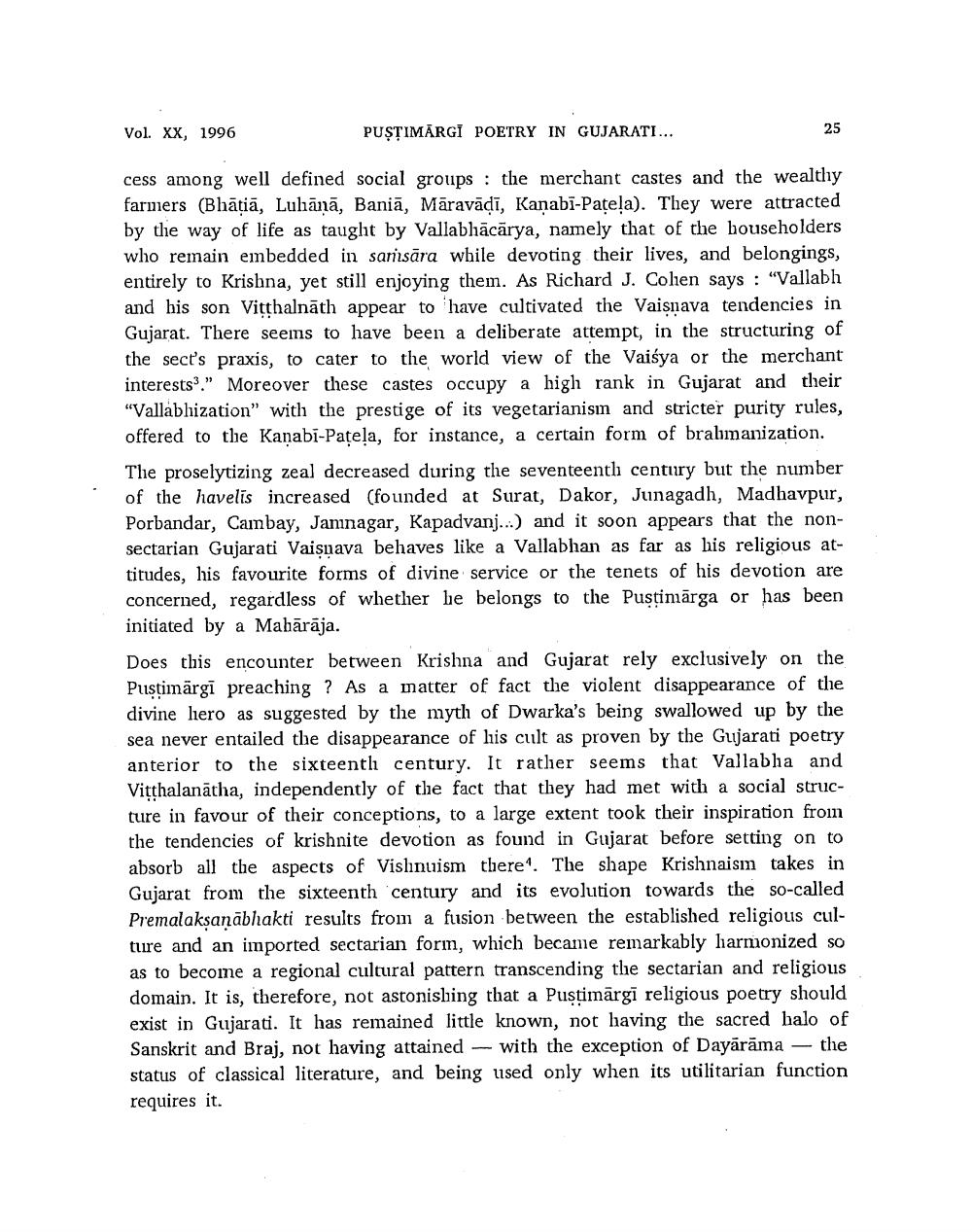________________
Vol. XX, 1996
PUȘTIMĀRGI POETRY IN GUJARATI...
25
cess among well defined social groups : the merchant castes and the wealthy farmers (Bhātiā, Lubānā, Baniā, Māravādī, Kanabi-Patela). They were attracted by the way of life as taught by Vallabhācārya, namely that of the householders who remain embedded in sarısāra while devoting their lives, and belongings, entirely to Krishna, yet still enjoying them. As Richard J. Colien says : "Vallabh and his son Vitthalnāth appear to have cultivated the Vaisnava tendencies in Gujarat. There seems to have been a deliberate attempt, in the structuring of the sect's praxis, to cater to the world view of the Vaisya or the merchant interests3.” Moreover these castes occupy a high rank in Gujarat and their "Vallabhization" with the prestige of its vegetarianism and stricter purity rules, offered to the Kanabi-Patela, for instance, a certain form of bralımanization. The proselytizing zeal decreased during the seventeenth century but the number of the havelis increased (founded at Surat, Dakor, Junagadh, Madhavpur, Porbandar, Cambay, Janinagar, Kapadvanj...) and it soon appears that the nonsectarian Gujarati Vaisuava behaves like a Vallabhan as far as his religious attitudes, his favourite forms of divine service or the tenets of his devotion are concerned, regardless of whether he belongs to the Pustimārga or has been initiated by a Mahārāja. Does this encounter between Krishna and Gujarat rely exclusively on the Pustimārgi preaching ? As a matter of fact the violent disappearance of the divine liero as suggested by the myth of Dwarka's being swallowed up by the sea never entailed the disappearance of liis cult as proven by the Gujarati poetry anterior to the sixteenth century. It rather seems that Vallabha and Vitthalanātha, independently of the fact that they had met with a social structure in favour of their conceptions, to a large extent took their inspiration froin the tendencies of krishnite devotion as found in Gujarat before setting on to absorb all the aspects of Vishnuism there. The shape Krishnaism takes in Gujarat from the sixteenth century and its evolution towards the so-called Premalaksaņābhakti results from a fusion between the established religious culture and an imported sectarian form, which became remarkably harmonized so as to become a regional cultural pattern transcending the sectarian and religious domain. It is, therefore, not astonishing that a Pustimārgi religious poetry should exist in Gujarati. It has remained little known, not having the sacred halo of Sanskrit and Braj, not having attained - with the exception of Dayārāma — the status of classical literature, and being used only when its utilitarian function requires it.




